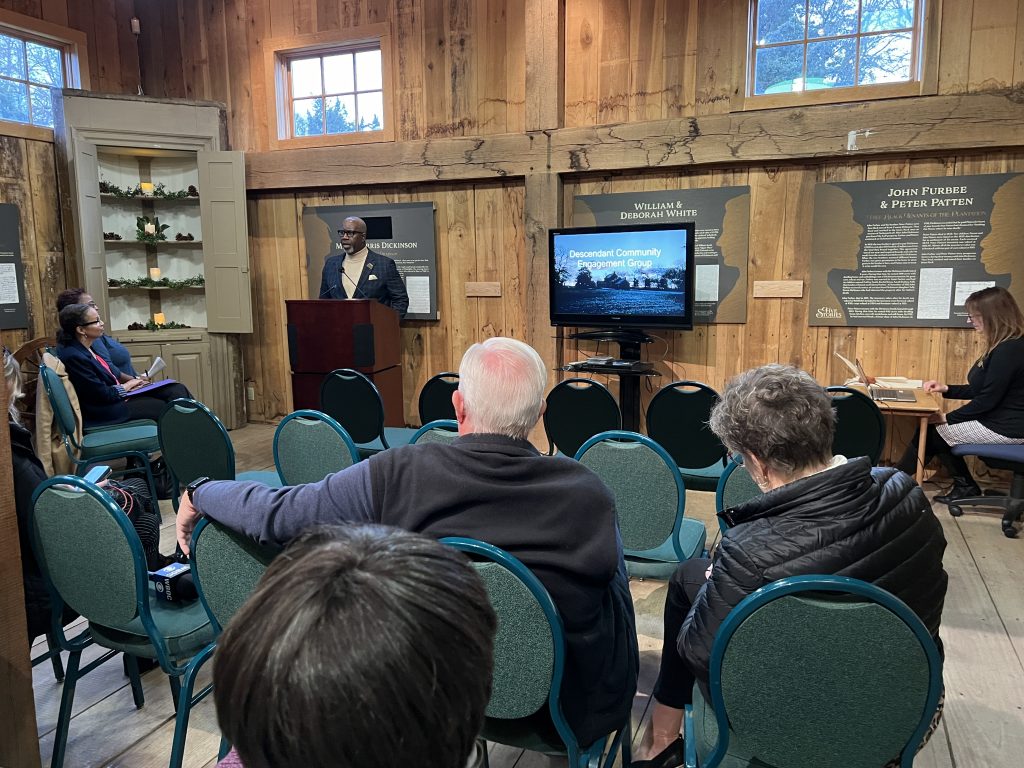Public outreach aims to engage a new community at John Dickinson Plantation

Two public meetings held in late 2023 have launched an effort to engage a community of descendants at the John Dickinson Plantation in an effort to better tell the stories of those lost to history, especially people of color and Indigenous people who lived, worked and died on the property southeast of Dover.
The plantation’s complex history as an early Colonial farm in Delaware includes Indigenous people being prohibited from utilizing and inhabiting land they had stewarded for thousands of years, people enslaved to work thousands of acres, people bound by contracts of indenture and tenant farmers. The site was also the boyhood home of John Dickinson (1732-1808) who eventually inherited the property and grew it to encompass about 5,000 acres. Today, the John Dickinson Plantation historic site is nearly 450 acres, including the African Burial Ground that was discovered in March 2021.
“This effort is vitally important to learning, honoring, and sharing our ancestors’ legacy in a long-awaited, respectful manner. HCA understands the value of, and is committed to, partnering with members of the community to fully understand the many facets of our shared history,” said Amy Golden-Shepherd, HCA’s deputy director. “There are stories to learn and share. This can only happen if we talk openly and regularly, build meaningful relationships, and work together toward accomplishing our shared goals of honoring and telling the stories of those who have paved the way for us all.”
Next steps are still being determined, but more public meetings or forums will likely be held at a later date so anyone interested in potentially becoming a member of the descendent community group, or just learning about what is happening at the John Dickinson Plantation, will be invited to learn more.
While the Division of Historical and Cultural Affairs (HCA) is helping to form the Descendant Community Engagement Group for the plantation, this group is intended to be an independent organization that will collaborate with HCA. This collaboration will be wide-ranging and include providing recommendations for the management and interpretation of the African Burial Ground and expansion of the narrative of the John Dickinson Plantation as a site of enslavement. Ultimately, the group can decide how formal or informal of an organization they want to be and how they govern themselves. Community involvement is a vital part of historic site preservation and interpretation, especially at one that covers difficult topics such as slavery.
These efforts are supported by a $5,000 grant from the National Trust for Historic Preservation’s Henry A. Jordan, M.D., Preservation Excellence Fund awarded to HCA to facilitate staff training and initial work with the descendant community at the John Dickinson Plantation.
HCA staff plan to utilize the “Engaging Descendant Communities in the Interpretation of Slavery at Museums and Historic Sites” rubric of best practices. The rubric, developed by James Madison’s Montpelier in partnership with the National Trust for Historic Preservation’s African American Cultural Heritage Action Fund, has three main categories: multidisciplinary research, relationship building with descendant communities and interpretation. Each category then has five to six sections that are graded from “exemplary” to “unsatisfactory.” Once an initial assessment is made, the rubric helps create a path for implementing changes and improving the grades.
For more information or to get involved, contact the John Dickinson Plantation at JDPmuseum@delaware.gov or call 302-739-3277.


